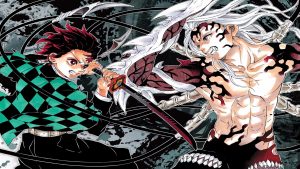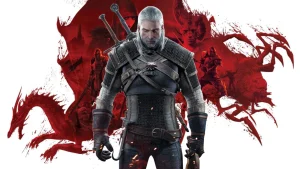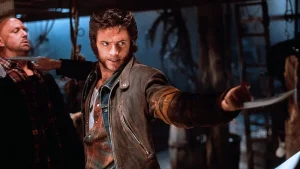Over the decades, Star Trek has introduced us to hundreds of unforgettable characters — from our favourite crew members to the many captains, admirals, aliens, and brave explorers who’ve graced our screens. While Star Trek will always belong predominantly to television first, its films have brought new scale, emotion and above all characters to the franchise. Many of the franchise’s most iconic figures were born on the small screen, but its ventures on to the big screen have added some incredible new characters to the canon.
Whether they were cunning villains, tragic visionaries, or brilliant scientists, these film-creations expanded Trek’s universe in ways that still resonate today. From the Shakespeare-quoting Klingons who went down in flames to the god-seeking Vulcan who broke all the rules, here are the eight best Star Trek characters introduced in the movies.
Star Trek: Insurrection has its fair share of flaws, but its villain, Ru’afo (F. Murray Abraham) remains one of the franchise’s more psychologically interesting villains. Obsessed with youth and vengeance, he plans to forcibly relocate the peaceful Ba’ku in order to steal the rejuvenating energy of their planet. Played with operatic menace by Oscar-winner F. Murray Abraham, Ru’afo, with his decaying, stretched skin, is certainly a grotesquely striking looking villain. The leader of the Son’a — he’s so desperate for youth that he’s willing to destroy an entire planet to get it.
While Insurrection is often considered one of Star Trek’s weaker films, Abraham gives Ru’afo gravitas and pain, transforming what could’ve been a generic villain into a tragic figure consumed by vanity and desire for revenge. Beneath the layers of prosthetics and rage is a man terrified of time. He might somewhat lack a meaningful connection to Captain Picard (Patrick Stewart) and his crew in the way that say, Khan had for Kirk and co. but in many ways that makes him a perfect Trek antagonist as he’s something entirely new and we’re never quite sure what to expect.
Leaving aside the somewhat cliché and implausible ‘Spock has a long-lost brother we never knew about until now’ storyline being introduced so late in the day, (at least it wasn’t quite as far-fetched as Discovery introducing his adoptive sister.) Sybok has to be one of the most interesting characters to come out of the Star Trek movies. Long before Star Trek: Strange New Worlds teased his return with a brief shot of him, Spock’s renegade half-brother was brought to life by Laurence Luckinbill in Star Trek V: The Final Frontier. A member of the V’tosh ka’tur, who sought experiences and emotions that were forbidden by Vulcan beliefs, Sybok is a Vulcan who rejects logic in favor of a full spectrum of emotion, and he’s on a quest to literally find God… you don’t get more of a fascinating antagonist than that.
Though The Final Frontier is infamous for its production troubles, Sybok is one of its few bright spots, suffering the misfortune of being a brilliant character stuck in a mediocre movie. He’s both compassionate and manipulative, wanting to free people from emotional pain even as he uses their pain to try and bend them to his will. A deeply flawed visionary with real conviction, Sybok remains one of the most underused characters in Star Trek history. However, we may well get to see more of Spock’s sibling as he looks set to return in the upcoming final couple of series of Strange New Worlds.
It’s easy to forget that Kirk actually had a child, and therefore, a baby mama. A brilliant scientist, moral idealist, and — to fans’ surprise — the mother of Kirk’s son, Dr. Carol Marcus (Bibi Besch) is one of Star Trek’s most important characters introduced in the movies. Not only is she the creator of the Genesis Device, a technology capable of terraforming barren worlds, but also of becoming a deadly weapon; she’s also a dedicated mother who, it turns out, has been raising Kirk’s son David all these years. It can’t have been easy juggling being a single mum with having a career as a leading molecular biologist, and quite frankly, the woman kicks ass.
Though fans might debate the morality of her decision not to tell Kirk about his son, it’s clear she did it for what she felt were the right reasons, to try and protect David, and given he is killed not long after meeting Kirk, we can’t help but see her point of view. Her addition to the franchise and relationship with Kirk add layers of emotional complexity to the story, forcing him to face his past and his legacy, and her work changed science within the Star Trek universe forever. She returned in Star Trek: Into Darkness, played by Alice Eve, but sadly, the extent of her relationship with Kirk in the alternative timeline was never fully explored; however, she has been briefly mentioned in Strange New Worlds, suggesting her story may not be over, and we may well see her in the final seasons.
With his wild hair, guttural growl, and fierce sense of honor, Commander Kruge (Christopher Lloyd) gave the Klingons a new level of menace, solidifying their classic pronounced head ridges and uniform, and was a formidable adversary for the Enterprise crew. Not only does he kill Kirk’s son David, but he also succeeds where countless others have failed in destroying the Enterprise, and very nearly defeats Kirk in hand-to-hand combat — all while remaining a warrior who fights for what he believes is right.
Lloyd, best known for comedy roles, brought surprising depth to Kruge, helping redefine the Klingons as more than just villains — they became a culture of warriors driven by passion, loyalty, and pride. In many ways, Kruge walked so that Worf and the like could run paving the way for everything we’d later learn about Klingon honor and culture.
We can only imagine what must have been going through the mind of Dr. Gillian Taylor, the assistant director of the Cetacean Institute and an expert in Cetacean biology, when she spotted a certain pointy-eared Vulcan diving into the tank of the institute’s humpback whale tank. Dr Taylor makes our list because there’s something so refreshing about seeing someone from our time witness the future of humanity and take it all in their stride.
Even when beamed aboard the hidden Klingon Bird of Prey ship and meeting the Enterprise crew, the good Doctor didn’t balk. She gets bonus points for being an animal lover willing to risk everything to protect her beloved whales, George and Gracie, and for her hilarious and flirtatious relationship with Kirk. In the end, Dr Taylor decided to leave the 20th century behind for the 23rd to continue to look after the whales in their new home. We can’t help but admire her fearlessness and sense of adventure.
Saavik often gets a bad rap from fans, but you’ve got to admit that the young, promising Vulcan Starfleet officer made an impact, even if she is mostly remembered for her questionable relationship with young Spock in The Search for Spock. Saavik (Kirstie Alley, and later Robin Curtis) was intelligent, composed, and quietly defiant. Unlike most Vulcans, she presented with just a hint of emotional vulnerability, which made her a more compelling character than she’s often given credit for.
Under Kirk’s mentorship, she truly grew as a character, learning to accept her mistakes and that it’s not always possible to be perfect. Her subtle emotional depth and moral backbone made her one of the more grounded and relatable Vulcans in Star Trek. Like Spock, she represented something of a middle ground between Vulcan logic and human compassion. Though she never returned after Star Trek IV, it’s heavily implied that fans can thank Saavik for Spock’s survival in The Search for Spock, though the full extent of their relationship may never be revealed.
When Star Trek: First Contact hit cinemas, the Borg went from being a sort of faceless hive mind-style enemy, much like the Cybermen or Daleks in Doctor Who, to having a representative of sorts, with the introduction of a somehow more human-seeming villain in the form of the Borg Queen. Played with a sort of slimy sensuality by Alice Krige, especially when trying to tempt Data, she provided a more focused antagonist for Picard and co. to attempt to reason with as she and her drones slowly took over the Enterprise.
Krige’s performance transformed the Borg from abstract horror into something disturbingly intimate. She returned many times over the years in Star Trek: Voyager and Picard, albeit played by different actors, but even decades later, her silky voice and chilling sense of calm make the Borg Queen one of Star Trek’s most unforgettable characters.
Arguably, no Star Trek villain ever graced the screen in style quite like Christopher Plummer in an eyepatch. In Star Trek VI: The Undiscovered Country (1991) he played General Chang, the Shakespeare-quoting Klingon warlord determined to sabotage the burgeoning peace between the Klingons and the Federation, and he played him with pure theatrical brilliance.
Chang doesn’t just provide a worthy opponent for Kirk — he challenges him ideologically, refusing to accept a future where these old enemies finally become allies. From his courtroom monologues to his unexpected reciting of Hamlet in Klingon while shooting torpedoes at the Enterprise, he’s a truly memorable villain and, let’s face it, a bit more of a laugh than say your average Borg Queen… Plummer makes Chang the perfect final adversary for the original series crew, a last throwback to the traditionally villainous Klingons before their reinvention, and as the last great TOS villain, Chang provided a perfect end to an era.
The post The 8 Best Star Trek Characters Introduced in the Movies appeared first on ComicBook.com.




